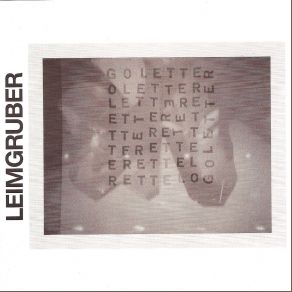Goletter
Download links and information about Goletter by Urs Leimgruber. This album was released in 1992 and it belongs to Jazz, Avant Garde Jazz genres. It contains 14 tracks with total duration of 58:11 minutes.

|
|
|---|---|
| Artist: | Urs Leimgruber |
| Release date: | 1992 |
| Genre: | Jazz, Avant Garde Jazz |
| Tracks: | 14 |
| Duration: | 58:11 |
| Buy it NOW at: | |
| Buy on iTunes $9.99 | |
| Buy on Amazon $8.99 | |
Tracks
[Edit]| No. | Title | Length |
|---|---|---|
| 1. | Goletter | 3:37 |
| 2. | Balabesk | 7:57 |
| 3. | Pas de deux | 3:29 |
| 4. | Sopralogie | 4:25 |
| 5. | Spiegelblinkt | 2:55 |
| 6. | Half past luck | 4:48 |
| 7. | Polyphem | 3:28 |
| 8. | Erinnyen | 2:59 |
| 9. | Hula Hop zwei | 5:54 |
| 10. | Le poem | 4:12 |
| 11. | Triple swift | 6:00 |
| 12. | Urubu | 2:46 |
| 13. | Circular Habasch | 2:18 |
| 14. | Infernal | 3:23 |
Details
[Edit]Urs Leimgruber has made numerous solo saxophone recordings, but never for both tenor and bass saxophone on the same album. Leimgruber is one of those players, like Anthony Braxton, for whom the saxophone is an endless labyrinth of timbral mazes and tonal corridors. On these 14 selections, Leimgruber is offering the listener the opportunity to hear his multiphonic approach to both horns, in all registers of the instrument. On the title track, one line is played as a drone and others, in scale, are imposed over it in differing lengths of phrase. On "Half Past Luck," the ostinato and conical tonal study are evoked where notes begin played from the bell are articulated more fully than those coming from the air chamber itself, but both weave together to create a kind of sinister weave of color and duration. It's almost jazz noir, but the microtonal elements stretch it further than that. "Hula Hop Zwei" is a multi-tracked piece for saxophone duet. The bass offers it's rhythmic swirl of charges and colors while the tenor elongates the octaves by multiphonics and spatters and squeaks in the middle of a rhythmic statement by the other horn. On the last track, "Infernal," another duet piece, deep blues, vanguard improvisation and repetition leads to a kind of schizophrenic hypnosis courtesy of the bass horn, when a third track is added and there are two tenors, each of them playing different intervals on the same melodic theme, things really come undone. This is another offering, which proves that Leimgruber is at the very forefront of saxophone logic and mysticism.